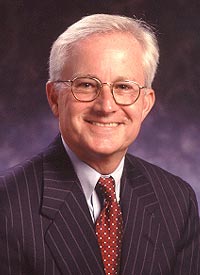2005 Articles
Celestica's New Driver
 |
| Craig Muhlhauser |
In January, Celestica announced a 15-month restructuring that would cut 5,500 jobs from the EMS company’s ranks. On May 16, the company introduced Craig H. Muhlhauser as president and executive vice president of worldwide sales and business development. A week later, it was named 2005 EMS Company of the Year by research firm Frost & Sullivan.
Not quite over, 2005 has been a grueling run for Celestica, the fifth largest EMS firm in the world. The new driver at its helm is a former auto executive and engineer who sees plenty of parallels between contracting and cars. He spoke with Circuits Assemblyfs Mike Buetow in August. (For the full interview, visit circuitsassembly.com/cms/content/view/XXXX.)
CA: Your background includes executive positions Ford and Visteon. What parallels do you see?
CM: Certainly it is a global industry built around an OEM market structure. Very tough, competitive end-markets; very challenging pricing environment. A lot of work focused on the elimination of waste and Lean principles, the application of Six Sigma. It’s very much consumer-based end-use markets with innovation and differentiation at the end-user.
CA: Do you think that it gives you any particular advantage?
CM: I think it gives me an advantage, because I didn’t come into the industry based on how it was founded or what the original intent was, and therein lays many significant market opportunities. I get a chance to look at the industry from our customers’ customers’ perspective, not just looking at the OEM, but looking at their customers and developing aggressive proposals that set Celestica apart in those markets.
CA: What are Celestica’s plans for that particular sector?
CM: The electronics content of vehicles is dramatically increasing and certainly applications like safety, security and telematics continue to increase in vehicles. This drives a quality cost, performance and velocity that really allows us to complete – probably more effectively. I think it’s important that Celestica understands how it needs to position itself in new markets. Obviously, we’re looking outside automotive as well. About 9% of our sales today are in automotive, medical and consumer, while industrial, aerospace and defense accounts for 10%. That’s been trending up.
CA: You’ve made gains with design services, but I haven’t seen Celestica identified as an ODM.
CM: We really have more of a contract design and manufacturing approach. Our view is that we will collaborate more extensively with our customers, but probably not replace them as the design lead. We’re looking at a number of options, but feel our model most effectively bridges the needs of our customers with our EMS capabilities. We’re looking at upfront design for manufacturing, design for assembly, design for service or in-service reliability. And we look at providing a total lifecycle cost solution, rather than a menu of design services. We’re looking to provide greater flexibility in product development and support of those products over the entire lifecycle, so we take on different roles depending on the nature of the engagement. That’s different from the ODM model. We’re especially interested in increasing the involvement of our resource base in some of the developing markets. We are also very focused on protecting the IP of our customers.
CA: What efforts has Celestica made in remanufacturing and activities that may take advantage of the emphasis on Green activity?
CM: We created a design capability, a fulfillment capability and an after-market services capability to support what I’d term post-delivery performance. The market is definitely growing as customers look to share more risk and support more downstream needs.
We’re not as involved in remanufacturing as say, repair and service, but it is another area that we could add value to our customers. We’re looking at optimizing the return process, reducing freight and leveraging materials and labor infrastructure to reduce turnaround time, so we’re focused on speed-to-market and first-time fix. Overall, we’re looking at reducing the total lifecycle cost and serving some of the diversified markets. As companies seek a more complex solution, this total lifecycle cost approach becomes valuable to them. They see themselves more as sharing risk as well, as more of their repeat business will depend on their equipment performing at higher levels of reliability.
CA: Have you seen an increased desire or contractual differences in how customers want to handle field failures, warranties and liabilities?
CM: It’s difficult for me to say in the few months I’ve been here how much that’s changed. Customers are looking for more service and, in response to that, different levels of risk sharing and reward sharing. I don’t think we’ve seen any material shift in the trends in the market at this point.
CA: What can you tell me about the acquisitions in Asia of CoreSim and Ramnish Electronics?
CM: Both are key to us building a broad design capability that offers unique engineering tools and processes. It’s essential to continue to build our engineering and design capability so that we can offer best-in-class design offerings.
Our growth plans are consistent with customer needs and will be achieved through organic growth and selective, strategic acquisitions. While we continue to proactively assess acquisition opportunities, our desire is to build the company organically.
One thing that may not be getting as much notice is Celestica’s rate of improvement in being more cost competitive, in the quality of our execution, the speed and responsiveness at which we are serving customers today; and their level of satisfaction. Now, we need to turn all of that into profitable growth. – Mike Buetow




